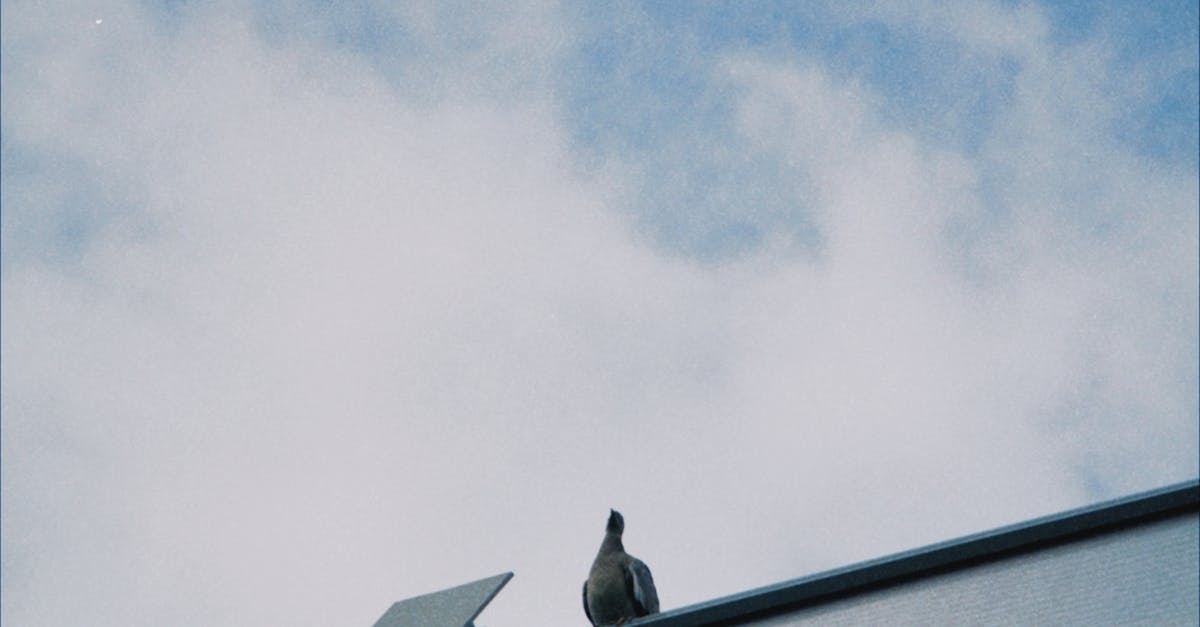
Comparing Longevity of Standing Seam Metal Roofing with Other Roofing Materials
Wood Shake Roofing Durability
Wood shake roofing offers an appealing aesthetic but carries specific durability challenges. Typically made from natural timber, its longevity can be affected by various environmental factors. Exposure to moisture, UV radiation, and temperature fluctuations can lead to warping and splitting. Maintaining wood shakes often requires regular treatments to resist rot and insect damage. Without proper upkeep, their lifespan may be significantly compromised, leading to premature replacement.
The performance of wood shake roofing also varies based on installation quality and the type of wood used. Some species are more resistant to decay, while others are prone to deterioration much quicker. Factors such as local climate, elevation, and exposure to harsh weather conditions can greatly influence the durability of the shakes. In areas with high humidity or frequent storms, wood shakes might experience a reduced lifespan compared to more resilient roofing options.
Factors Influencing Lifespan
The lifespan of roofing materials is significantly impacted by a variety of factors, including material quality, installation methods, and maintenance routines. High-quality materials tend to offer superior durability and resilience against environmental stressors. Proper installation is crucial, as poorly installed roofs may develop vulnerabilities that can hasten deterioration and lead to costly repairs. Regular maintenance practices, such as cleaning gutters and inspecting for damage, also play a vital role in extending the overall lifespan of roofing systems.
Environmental conditions present another critical aspect influencing longevity. Roofing materials are subjected to weather extremes, including intense sunlight, heavy rainfall, and strong winds. Regions with greater temperature fluctuations may experience more wear and tear on roofing materials than those in milder climates. Additionally, the presence of nearby flora can contribute to issues such as moss and algae growth, leading to premature degradation of the roof surface. Understanding these factors helps homeowners select the most appropriate roofing material for their specific needs and conditions.Extending the Lifespan of Standing Seam Metal Roof through Proper Maintenance
Evaluating Flat Roofing Systems
Ensuring Structural IntegrityClimate plays a significant role in determining the lifespan of different roofing materials. In regions with extreme weather conditions, such as heavy rainfall or intense sun exposure, certain materials may deteriorate faster than others. For instance, wood shake roofs are susceptible to moisture and may suffer from rot in humid areas, while metal roofing can withstand intense heat without warping. These variations highlight the importance of selecting roofing materials that match local environmental conditions to enhance durability.
Moreover, temperature fluctuations can contribute to wear and tear over time. In areas subject to frequent freeze-thaw cycles, roofing materials that expand and contract may experience cracking or leakage. On the other hand, regions with consistent temperatures may see less stress on roofing structures. Understanding the local climate not only guides homeowners and builders in making informed decisions about roofing choices but also helps optimise long-term performance and maintenance needs.Regular inspections are crucial for identifying potential issues that could compromise a roof’s structural integrity. Homeowners should check for loose or corroded fasteners, as these can lead to water infiltration and further damage. It is also essential to assess the seams for any signs of wear or deterioration. Prompt action taken at the first signs of a problem can mitigate more extensive repairs down the line and prolong the life of the roof.
Regional Considerations for Roof SelectionWeather changes can significantly impact the stability of a standing seam metal roof. Heavy rains, hail, or intense sunlight can cause materials to expand or contract, which may degrade the seals over time. Establishing a routine maintenance schedule allows for timely repairs and adjustments, ensuring that the roof remains resilient against the elements. Properly tightened fasteners and reinforced seams play a significant role in maintaining the overall durability of the structure.
When selecting roofing materials, the local climate plays a crucial role in determining the most suitable option. In regions that experience high rainfall, such as tropical or subtropical areas, materials like metal roofing can offer advantages, as they are less prone to water damage and decay. Conversely, areas with extremely dry conditions may benefit from materials like ceramic tiles, which can withstand harsh sunlight and temperature fluctuations without deteriorating.Managing Overhanging Trees
Additionally, local architectural styles and regulations should influence the choice of roofing material. Certain communities may have guidelines that dictate specific materials to preserve aesthetic harmony. Understanding the typical weather patterns and regional requirements ensures homeowners choose a roof that is both functional and compliant. This knowledge allows for an informed decision, balancing durability with the visual appeal of the property.Overhanging branches can pose a significant threat to the integrity of standing seam metal roofs. Heavy limbs swaying in the wind risk contact with roofing surfaces, leading to scratches, dings, or even punctures. Regular inspections allow homeowners to identify any potential hazards before they cause damage. Pruning trees that grow too close to the house can mitigate risk, preserving the roof and preventing costly repairs.
FAQSIn addition to physical damage, overhanging trees can contribute to moisture retention on the roof's surface. Debris such as leaves and branches can trap water, creating an environment conducive to rust and corrosion. Ensuring that trees are kept at a safe distance is essential for the long-term health of the roof. Keeping the area clear not only promotes better drainage but also encourages airflow, helping to prevent mould and mildew growth.
What is standing seam metal roofing?Reducing Debris and Damage Risks
While some basic maintenance tasks, like cleaning gutters or removing debris, can be done personally, it is best to hire professionals for inspections and repairs to ensure s afety and proper handling of the materials.
Managing Expansion and Contraction of Standing Seam Metal Roof Panels
Choosing the Right Coating for Standing Seam Metal Roof